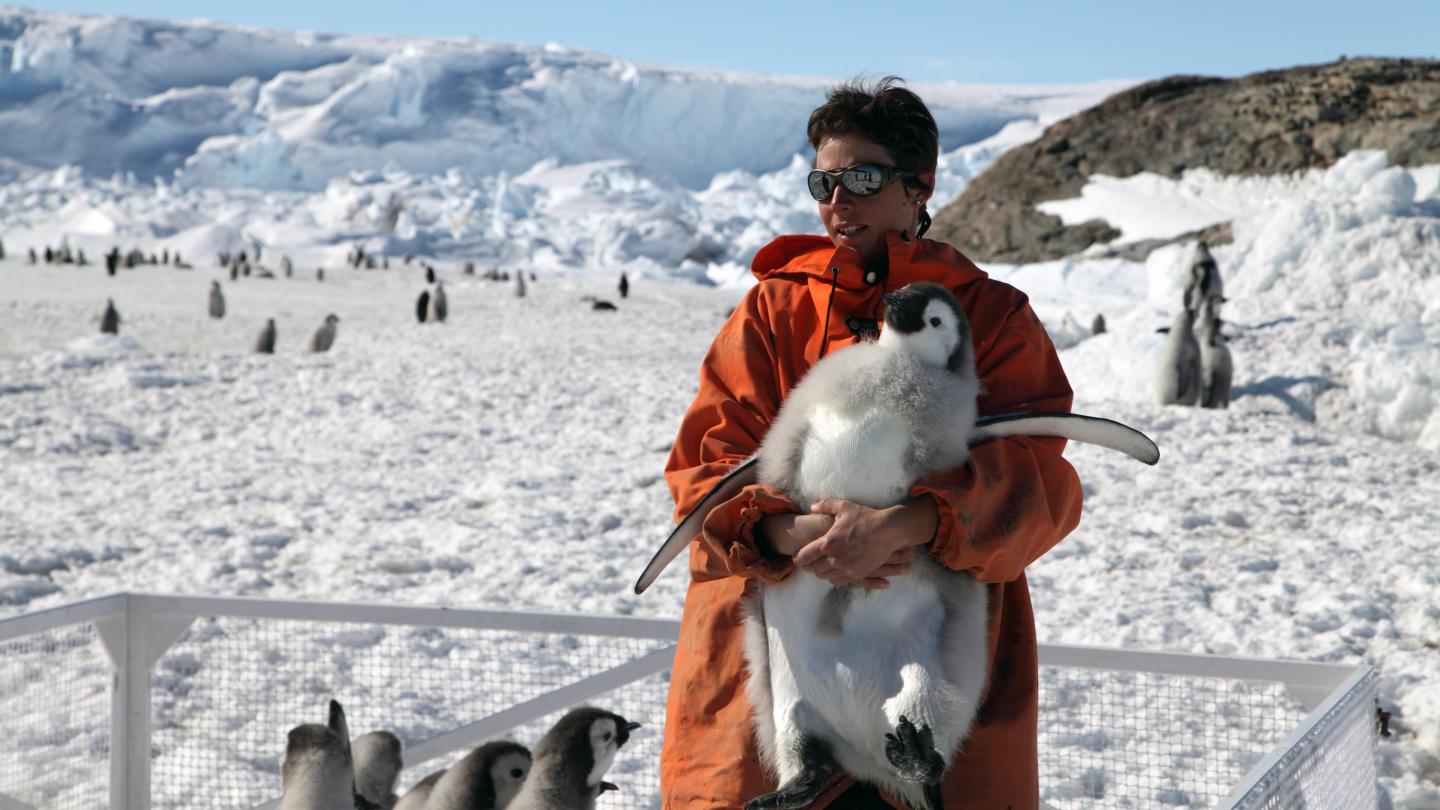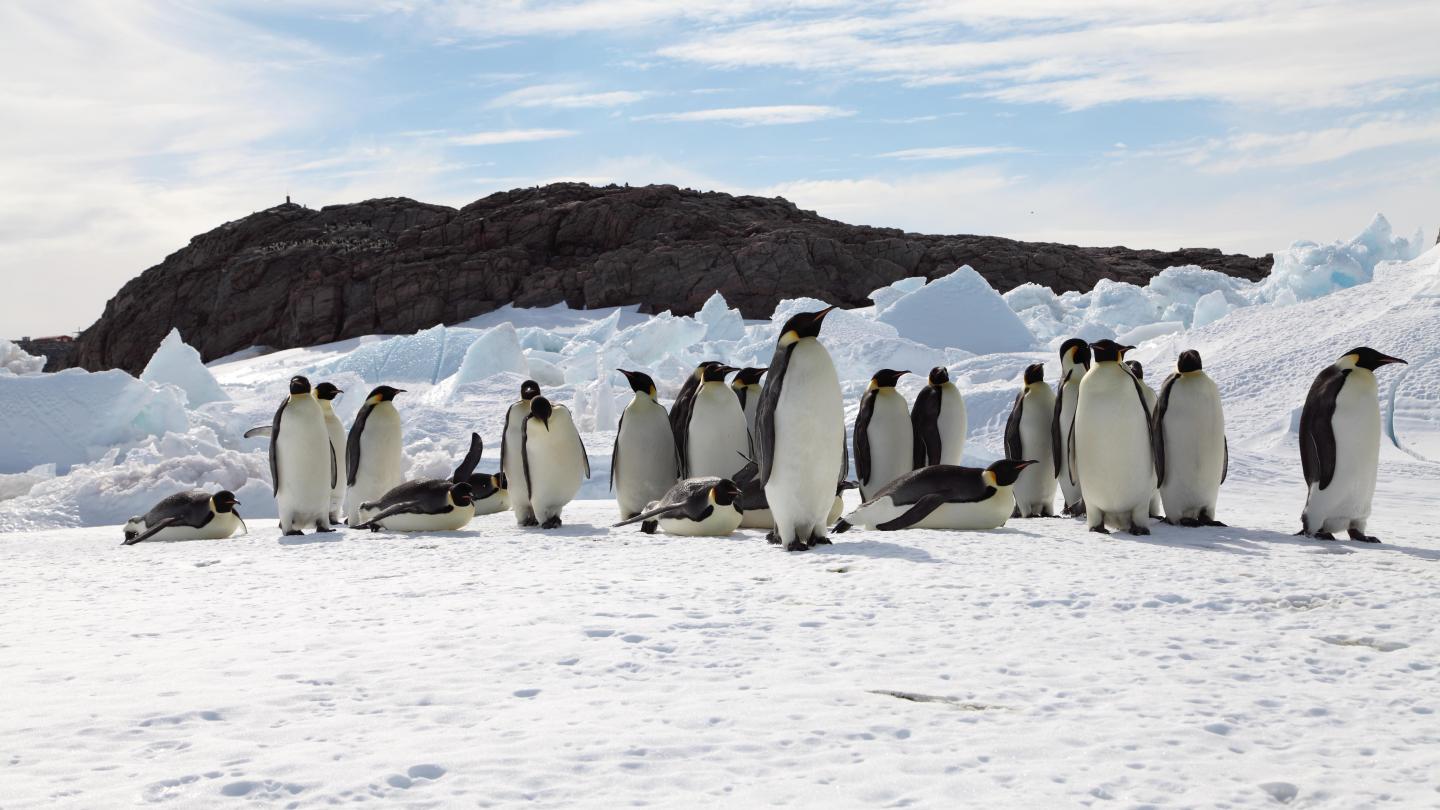Emperor penguins are some of the most striking and charismatic animals on Earth, but a new study from the Woods Hole Oceanographic Institution (WHOI) has found that a warming climate may render them extinct by the end of this century. The study, which was part of an international collaboration between scientists, published Nov. 7, 2019, in the journal Global Change Biology.
“If global climate keeps warming at the current rate, we expect emperor penguins in Antarctica to experience an 86 percent decline by the year 2100,” says Stephanie Jenouvrier, a seabird ecologist at WHOI and lead author on the paper. “At that point, it is very unlikely for them to bounce back.”

The fate of the penguins is largely tied to the fate of sea ice, which the animals use as a home base for breeding and molting, she notes. Emperor penguins tend to build their colonies on ice with extremely specific conditions – it must be locked in to the shoreline of the Antarctic continent, but close enough to open seawater to give the birds access to food for themselves and their young. As climate warms, however, that sea ice will gradually disappear, robbing the birds of their habitat, food sources, and ability to hatch chicks.
[ad_336]
Jenouvrier and her team conducted the study by combining two existing computer models. The first, a global climate model created by the National Center for Atmospheric Research (NCAR), offered projections of where and when sea ice would form under different climate scenarios. The second, a model of the penguin population itself, calculated how colonies might react to changes in that ice habitat.
“We’ve been developing that penguin model for 10 years,” says Jenouvrier. “It can give a very detailed account of how sea ice affects the life cycle of emperor penguins, their reproduction, and their mortality. When we feed the results of the NCAR climate model into it, we can start to see how different global temperature targets may affect the emperor penguin population as a whole.”

The researchers ran the model on three different scenarios: a future where global temperature increases by only 1.5 degrees Celsius (the goal set out by the Paris climate accord), one where temperatures increase by 2 degrees Celsius, and one where no action is taken to reduce climate change, causing to a temperature increase of 5 to 6 degrees Celsius.
[rand_post]
Under the 1.5 degree scenario, the study found that only 5 percent of sea ice would be lost by 2100, causing a 19 percent drop in the number of penguin colonies. If the planet warms by 2 degrees, however, those numbers increase dramatically: the loss of sea ice nearly triples, and more than a third of existing colonies disappear. The ‘business as usual’ scenario is even more dire, Jenouvrier adds, with an almost complete loss of the colonies ensured.
“Under that scenario, the penguins will effectively be marching towards extinction over the next century,” she says.